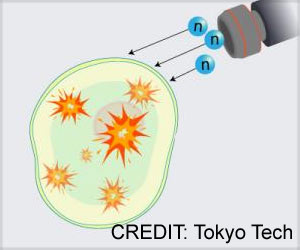Can radiotherapy completely cure cancer? The ability to accurately detect where X-rays land and in what dose could reduce the side effects.

Doctors Viewing the Interaction Between X-Rays and Cancer Cells
Radiation is used in treatment for hundreds of thousands of cancer patients each year, bombarding an area of the body with high-energy waves and particles, usually X-rays. The radiation can kill cancer cells outright or damage them so that they can't spread.‘Doctors can accurately direct the radiation toward cancerous cells and limit the exposure of adjacent tissues with real-time 3D imaging.’





These benefits are undermined by a lack of precision, as radiation treatment often kills and damages healthy cells in the areas surrounding a tumor. It can also raise the risk of developing new cancers.With real-time 3D imaging, doctors can more accurately direct the radiation toward cancerous cells and limit the exposure of adjacent tissues. To do that, they simply need to listen.
When X-rays are absorbed by tissues in the body, they are turned into thermal energy. That heating causes the tissue to expand rapidly, and that expansion creates a sound wave.
The acoustic wave is weak and usually undetectable by typical ultrasound technology. U-M's new ionizing radiation acoustic imaging system detects the wave with an array of ultrasonic transducers positioned on the patient's side.
The signal is amplified and then transferred into an ultrasound device for image reconstruction. With the images in hand, doctors can alter the level or trajectory of radiation during the process to ensure safer and more effective treatments.
Advertisement
Another benefit is it can be easily added to current radiation therapy equipment without drastically changing the processes that clinicians are used to.
Advertisement
This would be especially beneficial in situations where the target is adjacent to radiation-sensitive organs such as the small bowel or stomach.
Source-Eurekalert















